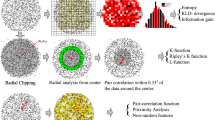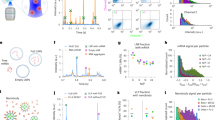Abstract
IN an earlier communication in Nature1, we have described a method of measuring photoelectrically the density of tracks in nuclear emulsions. It is analogous to the method of grain counts and can be used with electron-sensitive emulsions where the overlapping of individual grains prevents the use of the latter method. We have compared the residual ranges of particles from regions of their tracks which show the same projected area per unit length, that is, the same average track width. From these comparisons we have calculated the mass ratios. This corresponds to the method used by Lattes, Occhialini and Powell2 in grain counting.
This is a preview of subscription content, access via your institution
Access options
Subscribe to this journal
Receive 51 print issues and online access
$199.00 per year
only $3.90 per issue
Buy this article
- Purchase on Springer Link
- Instant access to full article PDF
Prices may be subject to local taxes which are calculated during checkout
Similar content being viewed by others
References
Nature, 166, 686 (1950).
Nature, 160, 453 (1947).
Author information
Authors and Affiliations
Rights and permissions
About this article
Cite this article
VON FRIESEN, S., KRISTIANSSON, K. Measurements of Mass Ratios in Nuclear Emulsions. Nature 168, 377 (1951). https://doi.org/10.1038/168377a0
Published:
Issue Date:
DOI: https://doi.org/10.1038/168377a0
This article is cited by
Comments
By submitting a comment you agree to abide by our Terms and Community Guidelines. If you find something abusive or that does not comply with our terms or guidelines please flag it as inappropriate.



